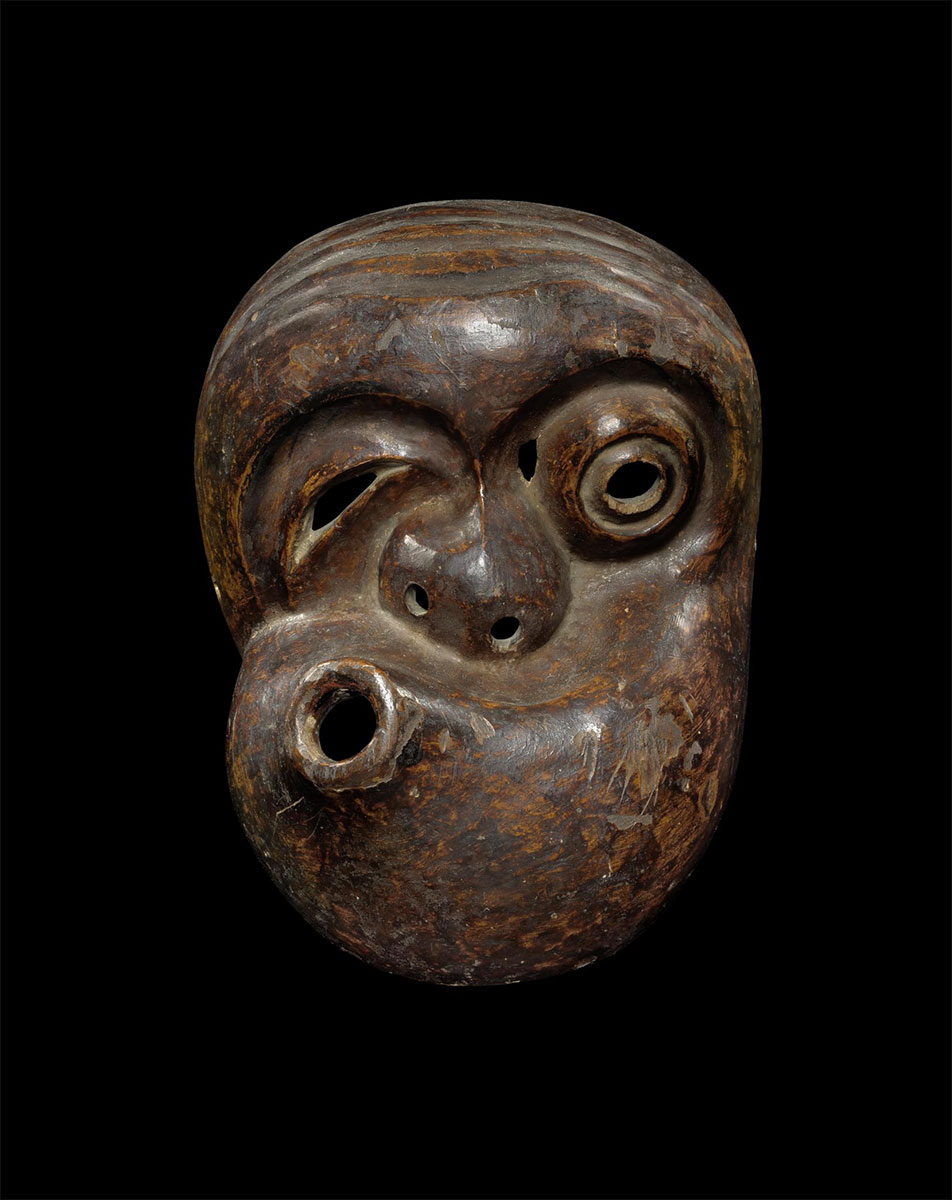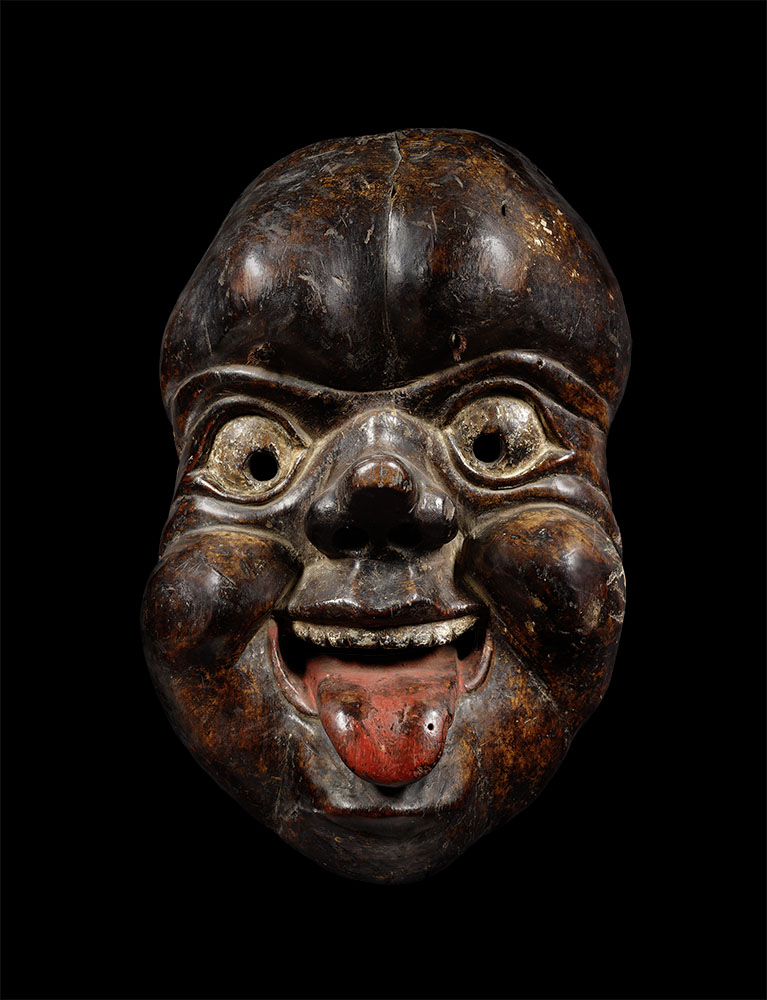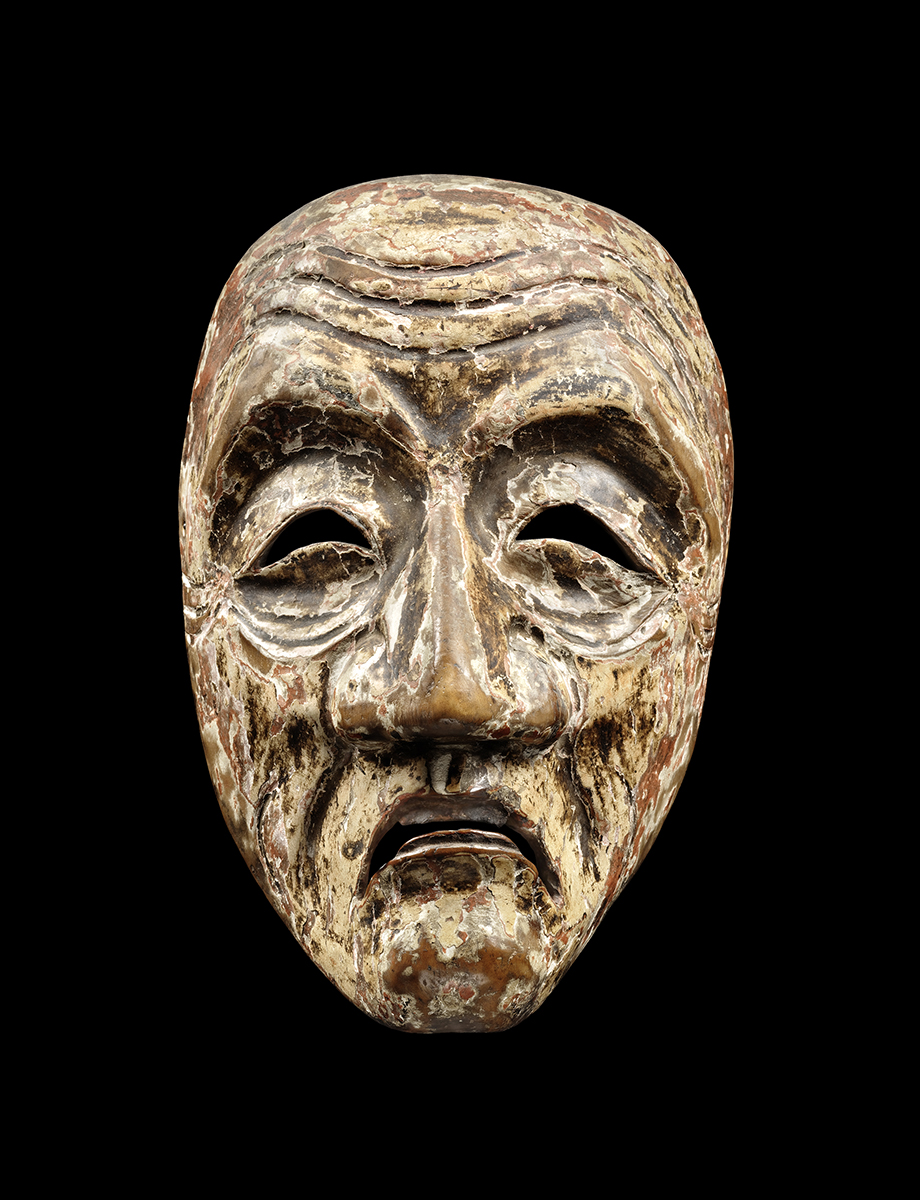Usobuki
Mask
- Sold
-
Material
Wood
-
Size
H. 17.5 cm – W. 12.5 cm
-
Period
Edo period, 18th century
Description
Usobuki kyōgen or/and kagura mask
Kyōgen masks are correlated to Noh masks, and there is great discussion about which influenced which. Kyōgen is usually played in the intervals of Noh plays. Unlike Noh, Kyōgen is less formal, with a lighter religious tone, and more related to comedy, the human nature and the search for meaning in daily life action. It is widely said that Kyōgen works as a scape valve for social and hierarchical tensions, as its main purpose is to make fun of important characters depicted in the Noh plays and in society in general.
Usobuki (or Usofuki) is the smallest of the characters representing the meaninglessness of the human condition in its impotent apex. Its eyes look surprised, but it is unable to scream or roar; it can only whistle, discretely, cowardly, inconsequentially. Hence, Usofuki also being used as the representation of insects and small animals. Hence, again, the origins of its own name: "uso" meaning lie, and "fuki" meaning to blow, to whistle.


